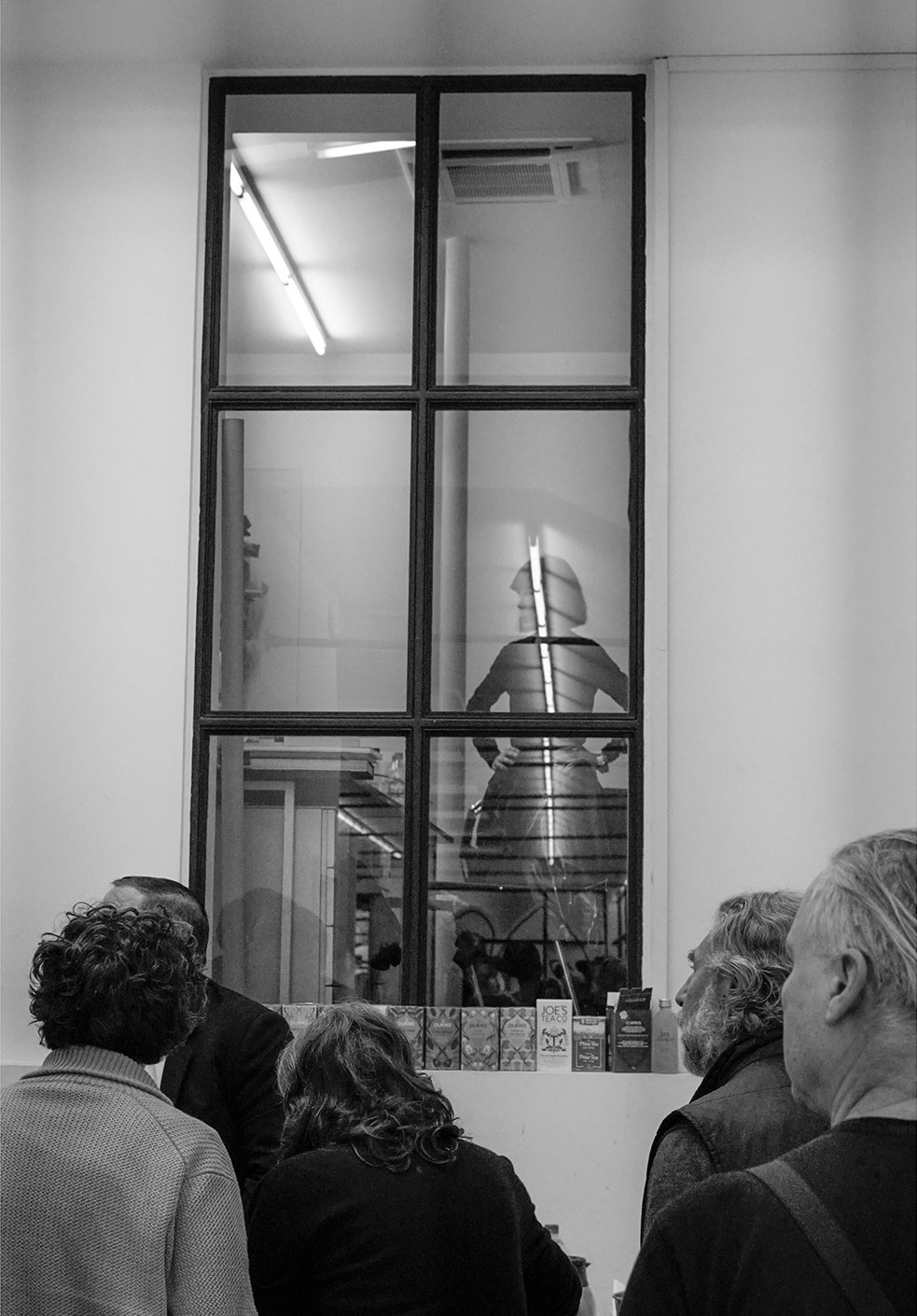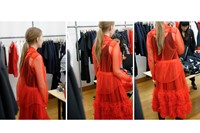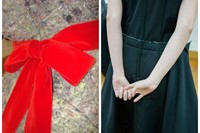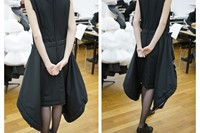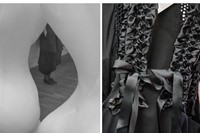The first time I visited the Comme des Garçons showroom was in March 1996, immediately following the staging of the Body Meets Dress, Dress Meets Body collection. Last week, at the preview for the imminent Metropolitan Museum of Art Costume Institute’s exhibition celebrating Rei Kawakubo’s work – the show opens in May – its curator, Andrew Bolton, revisited an anecdote that he generously described as belonging to fashion folklore written by me and which related to that experience. The show in question was, as anyone who has any interest in Comme des Garçons will know, among the designer’s most analysed, over-analysed, celebrated and indeed maligned in Kawakubo’s long and grand history. As the awestruck young fashion editor of The Guardian I asked the designer, timidly, what she meant by it. Kawakubo drew a circle on a piece of paper and walked away. I didn’t see her again until several months later.
Whether she was referring to the spherical brown paper skirts also in the show and by that point displayed on stands in the showroom, or to something more abstract, no one is ever likely to know. The fact remains that Kawakubo prefers her work to speak for itself. And that work, the impact of which, show after show after show, is unprecedented, is offered up for closer inspection in the Comme des Garçons Place Vendôme headquarters two days after it is initially unveiled (it is the same space where sales also take place). In fashion terminology, this experience is described as a re-see. But re-seeing Comme des Garçons and the clothes of the other designers in her stable – currently Junya Watanabe and Kei Ninomiya – takes those lucky enough to be there to another level entirely.
Place Vendôme
Laid out in 1702 as a monument to the glory of Louis XIV’s army, it seems more than coincidental that Place Vendôme is the location of Comme des Garçons’ Paris headquarters. The square – which in fact appears more like an octagon, given its corner structures – is otherwise home to fine jewellery by names including Chanel, Chaumet, Cartier and Dior and also, of course, to the Ritz. This is the heart of bourgeois Paris, then – the same bourgeois Paris which Kawakubo has chosen to destabilise ever since she was first invited to show in the French capital in 1981. Its typically grand and homogenous 18th-century facade and equally opulent interiors are a million miles away from her own aesthetic, something which carries through to the space in question.
This showroom started life in one room and has expanded over the years to different parts of the same building. It is brightly lit throughout, painted white, and clothes hang on simple black metal rails. Accessories are placed on equally minimal tables. Running down the centre of the largest room are mannequins dressed in the monolithic, sculptural pieces that, for the past four years, Kawakubo has shown, claiming that she is no longer interested in putting clothes per se on the runway. At the back of that same space is her own glass-walled office where she sits, stepping out from time to time to survey the scene quietly, before returning to her Tokyo home and company base.
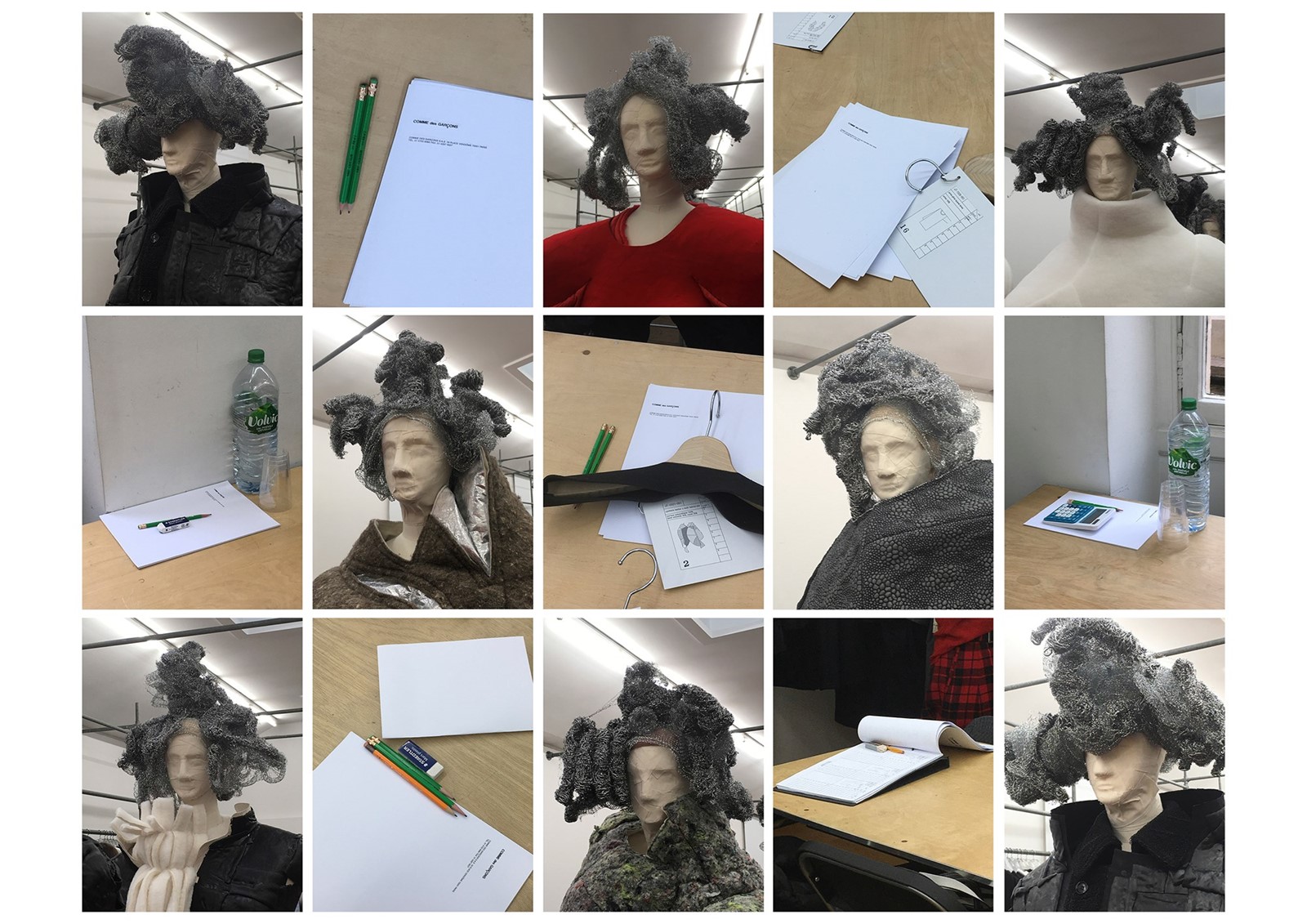
Comme des Garçons
For Autumn/Winter 2017, Kawakubo stated that she was thinking of “the future of silhouette” to inspire the 18 looks that she now produces for womenswear each season. Eight is her lucky number. This time, these huge shapes that cocooned the body entirely were created in materials not normally associated with clothing. Silver bubble wrap, wadding, treated felt that looked more likely to insulate central heating pipes than the body, and plaster covered in everything from flock velvet to lace contained arms, legs and torsos almost to the ankle. Signature frills, bows, spheres, protuberances and cutaway holes only added to the drama. Future silhouette indeed. The hair, meanwhile, which is transported from the runway to the showroom, was a tangled, vaguely 18th-century mess of what looked like wire wool for cleaning saucepans: a touch of genius from longtime Comme des Garçons collaborator, Julien d’Ys.
These statuesque designs are sold to collectors and museums for five-figure sums. They will also later be displayed in Comme des Garçons-owned Dover Street Market and flagship stores. Presented alongside them is a long rack of principally black and navy clothes that evolve to relate to this main collection every season. And so, a flash of silver foil can be seen on a Peter Pan-collared shrunken jacket here, a frill disrupts the front of a studiously broad black satin dress there. Shoes are, of course, flat and by no means conventionally flattering, only serving to undermine the conventional notion of dressing to impress further.
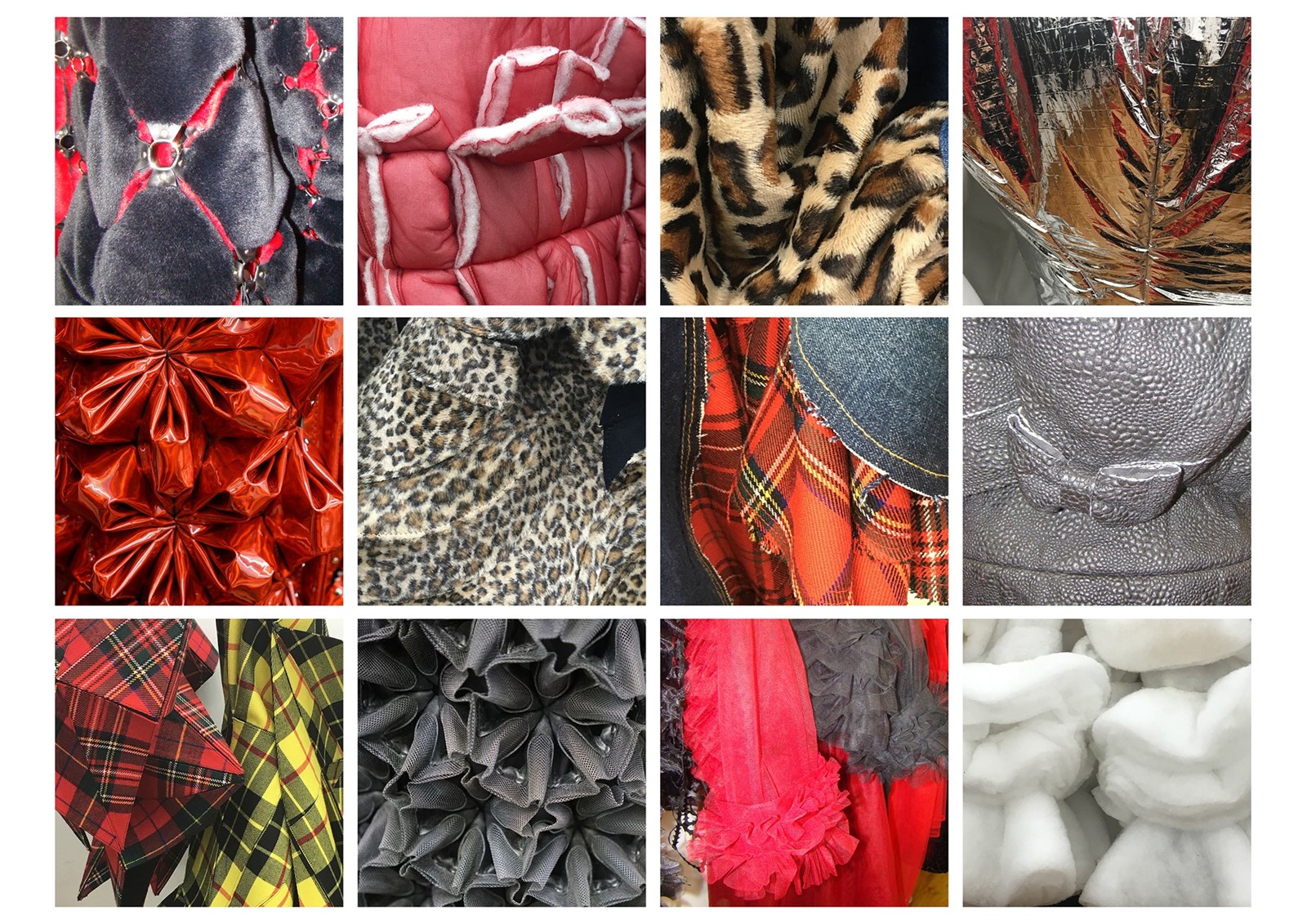
Junya Watanabe
Junya Watanabe began his career working for Comme des Garçons before starting up a label in his own name under the Comme des Garcons umbrella, first shown in Paris in 1993. His debut featured materials sourced from London’s flea markets – principally furnishing fabrics, but also tweed coats. This season, he looked back at that same sentiment using the extraordinary technical skills he has been evolving over the years. The result was some of the most energised and interesting fashion of the season, all with an ease and functionality that made it more appealing still. Watanabe appropriated the Union Jack as seen on Jimmie Martin’s high-backed chair, his signature tartans, leathers, faux leathers, army green canvas and denim, all cut into complex geometries that looked suitably fierce on the runway accompanied by T-Rex’s Children of the Revolution. These pieces appeared more remarkable still given his pattern-cutting prowess when seen at close quarters in the showroom, a floor up from the Comme des Garçons collection.
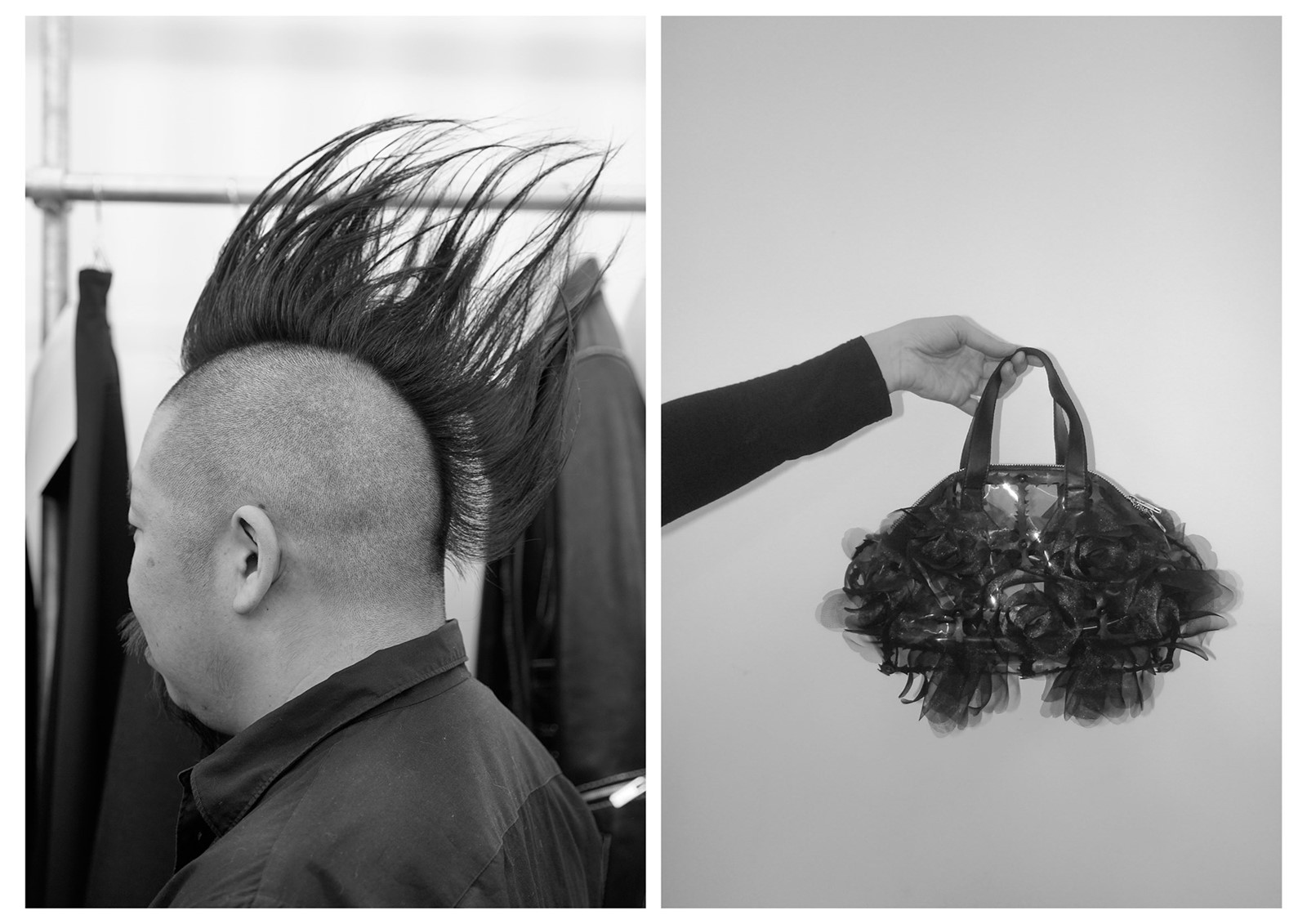
Noir Kei Ninomiya
Ninomiya, whose label Noir is the newest addition to the Comme des Garçons fold, also cut his teeth working with Kawakubo. The Noir part of the equation springs from his love affair with the non-colour which also, of course, applies to Kawakubo herself, who made it the fashionable shade to wear and be seen wearing in the 80s. Ninomiya’s work is displayed in a final, smaller room across from Junya’s where the designer himself, and his more than impressive mohican, are both in attendance. Also a man of few words, Ninomiya, whose show was staged in the Comme des Garçons showroom the day before being set up in its current capacity, based his current collection on flowers. The hours of workmanship involved in rows of small and perfectly formed blooms crafted in everything from chiffon to vinyl, all attached to a cage of faux leather edged with what look like thorns, is nothing short of spell-binding.
For our A/W17 fashion week coverage, anothermag.com is collaborating with Gasoline, a photography collective working with visual artists around the world. Here, Rosie Marks presents a look at the Comme des Garçons showroom for A/W17.
